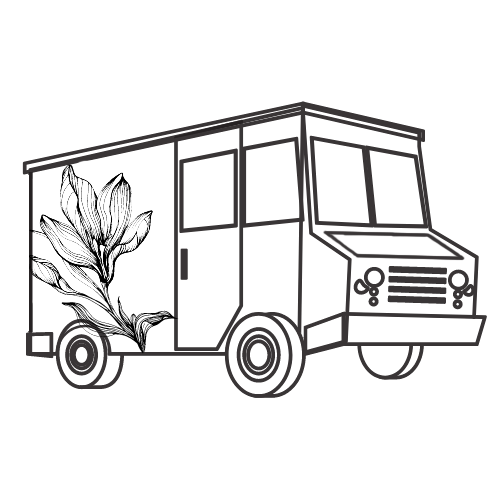

Mayhaw, Western
Crataegus opaca
| Hardiness Zones 6-9
A Southern heirloom tree, bearing flowers in spring and fruit for the pantry.
In the quieter corners of the southern landscape—along the edges of old creekbeds and in the silted hollows of cypress-bottomed woods—grows a tree once known to every forager, jelly-maker, and small child with a bucket and a sweet tooth. Crataegus opaca, the Western Mayhaw, is one of the South’s overlooked treasures: a small, deciduous tree that gives white-blossomed abundance in early spring, followed by blushing, edible fruit worthy of the finest preserves.
Though native to the intermittently flooded ponds and bayous of the western Gulf Coast—from East Texas through southern Louisiana—this hardy species is far more adaptable than its swampy origins might suggest. It grows well on upland sites, in average garden soil, and brings structure, blossom, and bounty without the fussiness of more domesticated fruit trees.
In flower, C. opaca evokes the native hawthorns of old hedgerows, but with a distinctly Southern charm—clusters of white blooms held against bare, silver-gray branches, a herald of spring in wilder places. Its fruit, ripening soon after, is ruby to coral in color, tart and rich in pectin—making it ideal for jelly that carries both flavor and memory.
Very similar to its close cousin Crataegus aestivalis, C. opaca distinguishes itself with its Gulf lineage and slightly earlier flowering. The fruit, too, tends to be a touch larger and more profuse, making it a favorite among native plant enthusiasts and those reviving heirloom recipes. Whether planted for wildlife, orchard, or beauty, this tree is a gift from the old South to the present.
The native range of Crataegus opaca (commonly called Western Mayhaw) primarily includes:
-
Eastern Texas
-
Louisiana
-
Southern Arkansas
-
Western Mississippi
-
Possibly extending into extreme southwestern Alabama
It is especially common in the bottomland hardwood forests, seasonal wetlands, and edges of intermittent ponds within the western Gulf Coastal Plain. While it naturally occurs in areas subject to periodic flooding, it is also well-adapted to upland garden conditions when given sufficient moisture.
Highlights
-
Spring Blooms: Abundant white flowers in early spring provide visual delight and early pollinator support
-
Edible Fruit: Produces tart, coral-red mayhaws perfect for traditional jelly and preserves
-
Native & Adaptable: Native to intermittent ponds of the western Gulf Coast but thrives in well-drained, non-flooded sites
-
Heirloom Value: An old Southern favorite now rare in cultivation—ideal for native plant gardens and edible landscapes
-
Wildlife Friendly: Provides food and habitat for birds, bees, and other pollinators
Pickup available at Aiken Nursery
Usually ready in 2-4 days
Schedule Delayed Shipping in your Cart
Plant Specs
- Zones: 6 - 9
- Sun: Full Sun and Part Shade
- Soil: Moist and Wet
- Height at Maturity: 15 - 25 Feet
- Spread at Maturity: 12 - 15 Feet
- Growth Rate: Moderate
Deciduous
Flower/Foliage
White, early spring
Care Info
Here’s a closer look at how we produce our plants:
From rooting to shipping, our top priority is ensuring you receive healthy, thriving plants for your garden’s success.

The majority of our plants are carefully cultivated from rooted cuttings, while we also utilize propagation methods such as seed, air layering, and grafting, thoughtfully chosen to suit each plant’s unique needs.

Our plants are cultivated using sustainable practices, including organic soil blends and eco-friendly pest management, ensuring they thrive while minimizing environmental impact.

We are proud to contribute to local biodiversity through ongoing donations to the Aiken Arboretum and support for local wildlife conservation efforts, helping to preserve and enhance our community’s natural ecosystems.
Frequently Asked Questions
What to expect upon delivery
All our plants are sold in 1-gallon sizes, though the height of each plant can vary depending on its growth rate and seasonality, typically ranging from 1/2 to 2.5 feet.
Each plant is carefully packaged with its roots enclosed in a secure plastic bag containing moist soil, forming a compact root ball. To ensure safe transport, the box is padded with recycled newspaper, providing both stability and eco-friendly protection from weather during shipping.
What is your return policy?
Review our full return policy information on our SHIPPING AND RETURNS POLICY page.
What payment methods can I use?
We offer 35 different payment methods including major providers like Mastercard, Visa, PayPal, American Express and Diners as well as many different local payment methods including Klarna, iDEAL, AliPay, Sofort, giropay, and many more.
Can I make changes to my order after it’s been placed?
At Woodlanders, we strive to fulfill orders as quickly as possible. Therefore, we can only accommodate changes to your order within the first 24 hours after it has been placed. These changes include adding or removing products and modifying the delivery address. If you need to make any changes or if there has been a mistake with your order information, please reach out to us promptly via our CONTACT page with your order number for the quickest resolution.
Your satisfaction is our priority, and we appreciate your understanding and cooperation.


